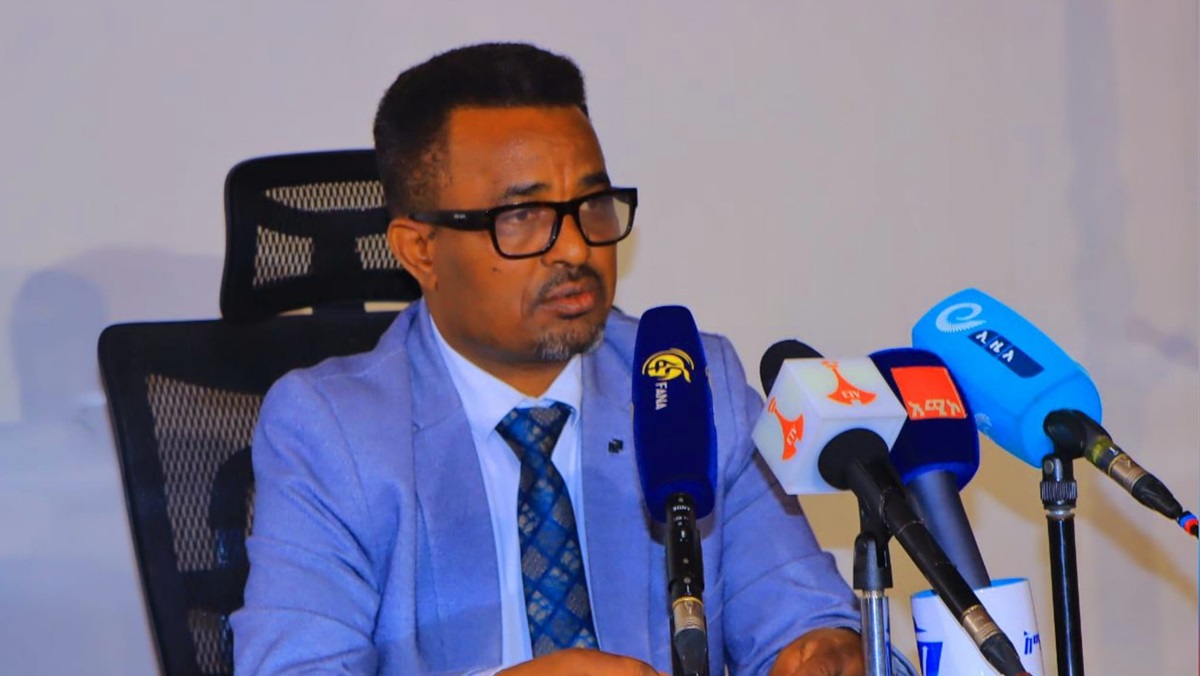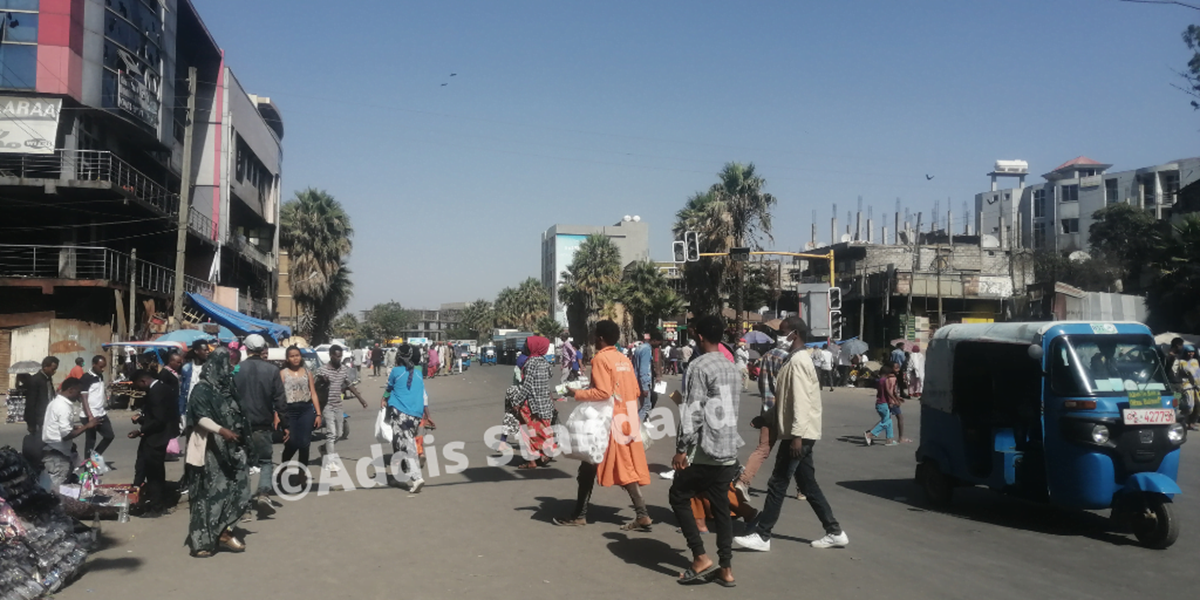Viewpoint: Why Again, and Again? The Humanitarian Emergency in Borana
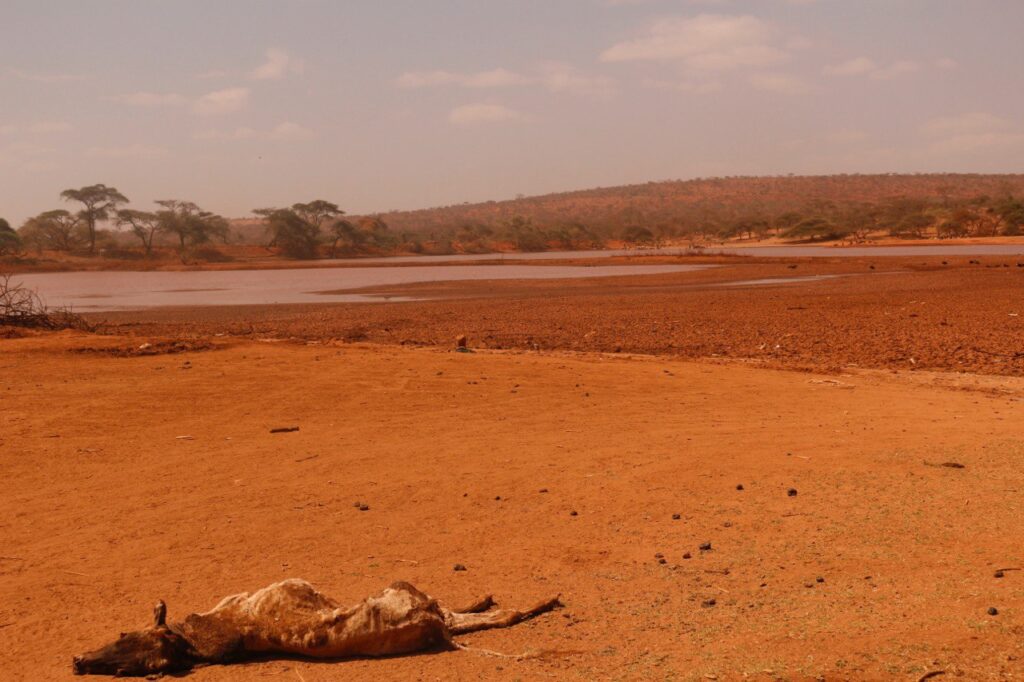
By Dawie Tola
Borana, Oromia – Borana has had a history of climate-induced humanitarian emergencies for decades; recent ones are from 2000, 2010 and 2021-2023. It has two rainy seasons in a year; one is called “Hagayaa” and covers about 30 percent, and the other is called “Ganna,” which starts in the middle of March and covers about 70 percent. Borana has two sorts of water access because it does not have natural rivers or lakes within its vicinity. However, they have unprotected (ponds, wells) and protected (motorized, hand pump) sources. There is one artificial pond Haroo Bakke, supported by a foreign initiative in 1966, making one of the main remaining bodies of water in Borana. However, it has started to dry up. Currently, there are about 520 protected water sources. While 119 are not functional, 401 are functional but have dried up.
Climate Change
There are two things that make this drought unique. One is the fifth cycle with no rain, and it has been more than three years since it has not rained in Borana. Secondly, the longevity and magnitude of the depth of the drought are unfamiliar to the people of Borana and its leaders. There is no district in Borana that is not affected by this drought including other east African countries. There are five hospitals, fifty stabilization centers, and forty-six functional sites identified by the government and NGOs for emergency response which also includes the outbreak of measles (127 reported in the Moyalle district) and difficulty containing the prevalence of cholera in Kenya and Somalia. With the Borana people fighting malnutrition, the add-on doses will start to cause an increase in the death toll.
In the past, Borana people would migrate to Kenya or Somalia to wait out the drought; however, the neighboring countries have declared a state of emergency. This has eroded its coping mechanism and broken its resilience. This has left the people of Borana with few options for migration, leading them to follow clouds to west Arsi or Guji, but unlikely. According to the zonal administration of Borana report, approximately 1.7 million people need humanitarian aid possible (food, water, health, and cash). 3.3 million livestock have perished over the last three years, approximately worth 3.3 billion birr.
There are two types of societies in Borana: The Semi-Agrarian society and the Pastoralist society. Climate change has affected these communities in different ways. The pastoralist community lost 90 percent of their livestock; one pastoralist owns on average 200-300 cattle now they are left with 0-5. The surviving cattle are emaciated and suffer from Goat pox, SVVP, Anthrax, camel pox, and other livestock-related diseases. In some cases, when the cattle are purchased, they die without reaching their destination.
The Borana are also losing their businesses. The Agrarian dependent communities such as Telltale have suffered heavily because they entirely relied on their farming and their land. Telltale is known for cereal production mainly teff. The loss of all animals for traction makes a recovery a challenging task. They did not just lose their business but also their livelihood because they needed food. They also fear migration because they want to maintain their land. The containment period is overdue because the delay in early warning and response has intensified the type of aid needed now compared to three years ago. As a result of inactions, approximately 59,000 households are destitute.
Market
With the mild livestock trade stretching far, known for their breed and quality, this market needs to be protected. I was able to visit the Bekke market, which is one of the largest livestock markets in east Africa. I observed that not many cattle were available at the market, and the few presents were emaciated and had no market value. The market even included animals such as camels and donkeys which were also thin and had no interest for the buyer. It was surprising to see over thirty empty Isuzu vehicles hoping to load and transport livestock were left empty and hopeless.
Besides red meat, the biggest export and import Borana relied on is the milk trade, which is now nonexistent. Borana’s economy has been declining since the beginning of the drought, and within these three years, the economy has been destroyed. Restoring the economy to what it once was will take a long time. Also, neighboring country Kenya has started to take advantage and sell two types of milk to Borana. Daima and Mount Kenya are selling 300ml for 60 birr on the market.
The Elderly
The Oromo people are one of the many communities to invent their democratic system. The “age-set” system the Borana people follow is known as the Gadaa System. “The Gadaa system is a system of generation classes that succeed each other every eight years in assuming political, military, judicial, legislative, and ritual responsibilities. Each of the ten active generation classes beyond the first three grades has its assembly. However, the leaders of the class become the leaders of the nation when their class comes to power in the middle of the life course, a stage of life called “Gadaa” among the Borana. The class in power is headed by an officer known as Abba Gadaa” (Legesse pg104).
The longevity and magnitude of this drought has put the Gadaa system in a vulnerable state. The elderly are critical players in the system’s functionality; the lack of elders will lead to the collapse of the Gadaa system in the long run. According to tradition, the man/elder eats after he has ensured the woman and children have eaten; by putting themselves at risk, they prolong their family life span. Whenever aid appears from NGOs or the private sector, immediate assistance goes to women and children, leaving the elderly behind.
In other communities that are not Oromo or societies that do not follow the Gadaa system, this response is acceptable. However, the lack of attention given to the elderly is dangerous for stabilizing Borana after the drought. The preservation of the elderly is the preservation of democracy for these communities.
Gender
Borana has assigned gender roles. The woman does the work needed for the house while the man is in the field, either herding or farming. The people of Borana are living a uniform lifestyle. No one is in a better position than the other, leveling the gender roles. The woman cannot tell the man to go to work, and the man cannot tell the woman to do her duties because he cannot provide. During these difficult times, there have been two significant cultural changes, one is gender-based violence, and the second is begging. In the culture of Borana and restricted by the Gadaa system, there have been almost no cases of gender-based violence.
“The Gadaa system has effectively exercised a gender-based division of labor in Oromo society; men have controlled the mobile resources that required going out from the homestead herding, defense of livestock and land, tilling new fields, plowing, and others. Women have controlled the static resources of the house, the grain, and other products of the fields once they are brought into storage. Even the cattle around the house are under their control; women milk them and decide how much milk goes to the calves, how much to the people in the household for drinking, and how much for butter or cheese to eat or sell.”
Fetching water from remote sources and carrying emergency food from distribution centers remains the women’s obligation. By exercising absolute day-to-day control over the disposition of the resources at every point of the decision-making process in ways that are protected by the value system of society, the woman wields determinative influence in society. In the areas we visited, Telltale, Dilo, and Moyalle, the impact of drought and malnutrition on children and lactating mothers were significant. They were emaciated and hardly walking and talking. Milk and milk-related products, which were part of their daily diet, are nonexistent. Children are nestling on their empty, weak, and dried mothers. The lack of nutritionists and medication needed to fight malnutrition, such as F100, defeats the efforts of screening.
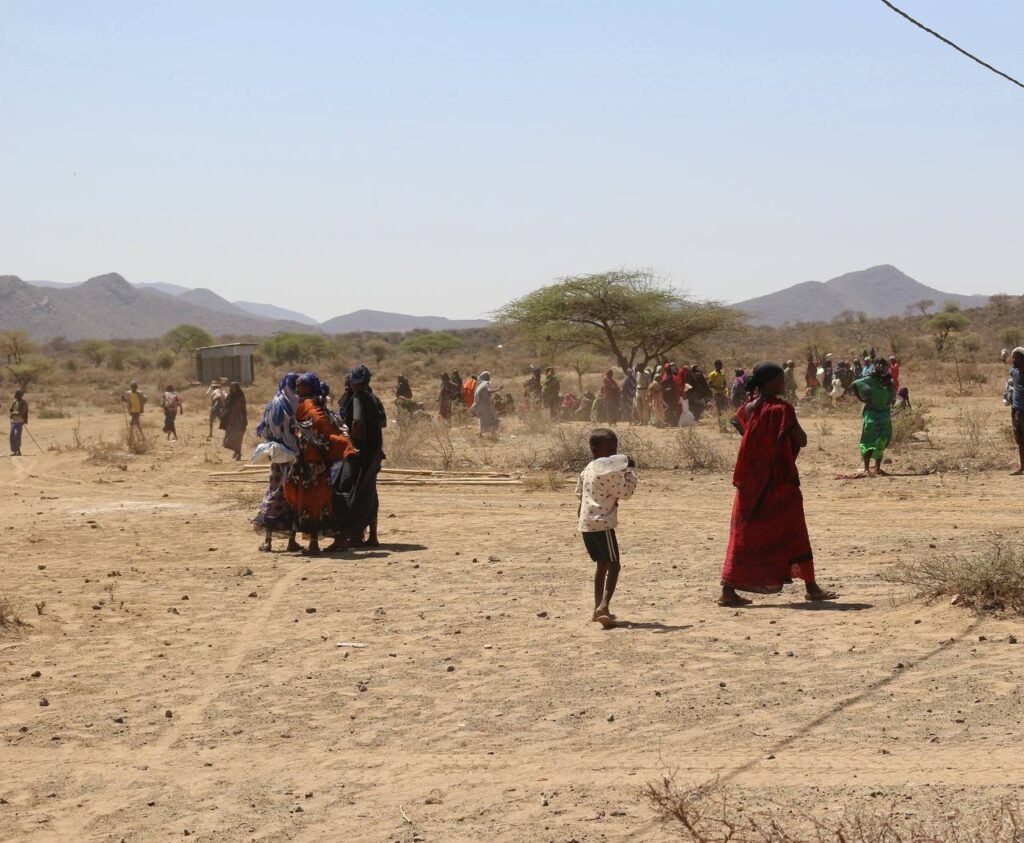
I met a grandmother named Bate Kushe at Telltale. As Bate was sharing her story, she flashed me her legs to show me what was happening to her in fear of leaving her grandchildren without a guardian. Her legs looked like skin wrapped around the bone with nothing in between. The malnutrition is obvious and advanced, most likely because she eats after her grandkids have eaten, leaving her with nothing to eat for days. She was left with her two grandchildren because the father fled to Kenya looking for any opportunity where he could do something for his family.
The mother ran away shortly after, and her whereabouts are not known. As a grandmother, Bate has been taking care of herself and two children. She shared her story of how she could not travel to get water even if she was young because the available water source could only be traveled by motorcycle. The water that is available for drinking and cooking needs to be cleaner and sanitary. Once arrive at the closest water source, people are limited on how much they can take back. Bate stated they allow only one can per trip, which is usually done by the time they cook something to eat. She stated that the men shared the women’s role in going on the long journey to retrieve as much water as possible.
The men and women stay at home or gather outside together because there is nothing to do except wait for rain or the arrival of help. The drought has created a mindset that clouds moral and ethical values presented in the Gadaa system because “the balancing of the domains of women and men and maintaining their interdependence that has been a precondition for keeping the peace between the sexes and for promoting moral and ethical order in society” is slowly fading away.
Media
The media plays a huge role when it comes to creating awareness and mobilizing aid for people in Borana. Individuals in other cities and countries need to have accurate information on what is going on and the degree of the effects to gain donations or increase the spread of awareness. One media source called Oromia Broadcasting Network (OBN) had been following the progress of the drought, but now news stations such as BBC, VOA, and ETV have been covering the story.
The delayed reaction of the media to gain awareness and the misinformation spread through some news sources has caused a delay in response from private sectors and donors. The power of media was illustrated once news stations started broadcasting the harsh conditions on TV and social media. Once the media started being consistent and started spreading awareness, private sectors such as the Oromia Coffee Farmers Union, entertainment industry, Shaggar City, residents of Addis, Wollaita and other concerned citizens started donating water, food, money, and transportation.
Emergency Response
Borana received emergency responses to this drought from three different sectors: the government, private sectors, and NGOs. According to the zone administration, “the government has given aid to approximately 800,000 individuals out of the 1.7 million in the form of food, oil, and beans”. Also, the Addis Ababa city administration donated around ten water trucks to Borana. The coordination deputy is responsible for storing the items donated and distributing aid in an organized fashion.
The coordinator identifies the areas and comes up with a method to distribute aid. Other emergency aid contributors that are present in Borana are private sectors such as the Oromia coffee farmers union, Gold Water, Sheggar City, and the entertainment industry. Sheggar city transported around ten trucks filled with food, water, and hay. The entertainment industry was able to donate and bring awareness by using their platform as artists. Lastly, NGOs such as CARE, Ethiopian Red Cross, UNICEF, and other NGOs were providing emergency aid to the people of Borana. Approximately forty NGOs were present in Borana, twenty local and twenty internationals based. They have been focused on solar, sanitation, screenings for malnutrition, mobile health, rehabilitation, cash transfer, and education. According to the Zone administrator, “Big NGOs such as UNICEF are present in Borana but have directed their aid to building schools, school feeding, and distributing scholar materials.” CARE donated trucks full of food and hay.
The Ethiopian Red Cross participated in two different types of emergency response distribution of food and related items and cash transfer. They distributed food items such as wheat flour, oil, grains, and supplementary foods for children. The method of cash transfer used by the Red Cross is the most effective, efficient, and transparent form of emergency response. An individual can get what they want immediately instead of being limited by donations portraying the effectiveness of cash transfer. It is also efficient because it does not take a long period to provide this aid. An individual will have immediate access to this aid because the money is transferred to each household through their bank accounts. Finally, it is transparent because the number of people who received the cash is known and accounted for.
The donor would have access as well as information to track their donations. After receiving funding, from Swiss and Finnish red cross, the Ethiopian red cross then distributed. The Borana distribution method was not challenging because the Gadaa system has already created a structured community. Working closely with the community and the Abba Ollaa (which are elected leaders of their own) can help for better coordination to identify the most affected. By gathering up with the leaders and making a list of affected people, the Ethiopian Red Cross can assist in opening a bank account for the head of the household.
According to the Ethiopian red cross Moyalle district representative, “the Ethiopian red cross has provided three rounds of cash transfer aid in Moyalle, which is divided into two sub-districts, Oromia and Somali. The eight kebeles, which include Dambi Hara, Babee, El Digalu, and Bokola, are all located in the Oromia subdistrict. Ralo, Gulele, Laf Sure, and Harsam are all located in the Somali district. The Ethiopian Red Cross responded to both districts; With around 3,000 households receiving 6000 birr each on the first round totaling over 58,000,000 birr over three rounds”.
The main challenges the red cross faces when providing cash transfers is access to the market and remoteness. In areas such as telltale, cash transfer is functioning well because of the access to markets from neighboring southern regions such as Konso. They have access to a market for grain, cattle, and other commodities they need. Similarly, Moyale cash transfer is prospering because it is a border city and has access to markets from Kenya. However, Dilo is very remote and needs market access to commodities. Thus, humanitarian aid such as food, oil, and water tankers are the only way of emergency response. The limitation of cash transfer is the dependency on market access.
The way forward
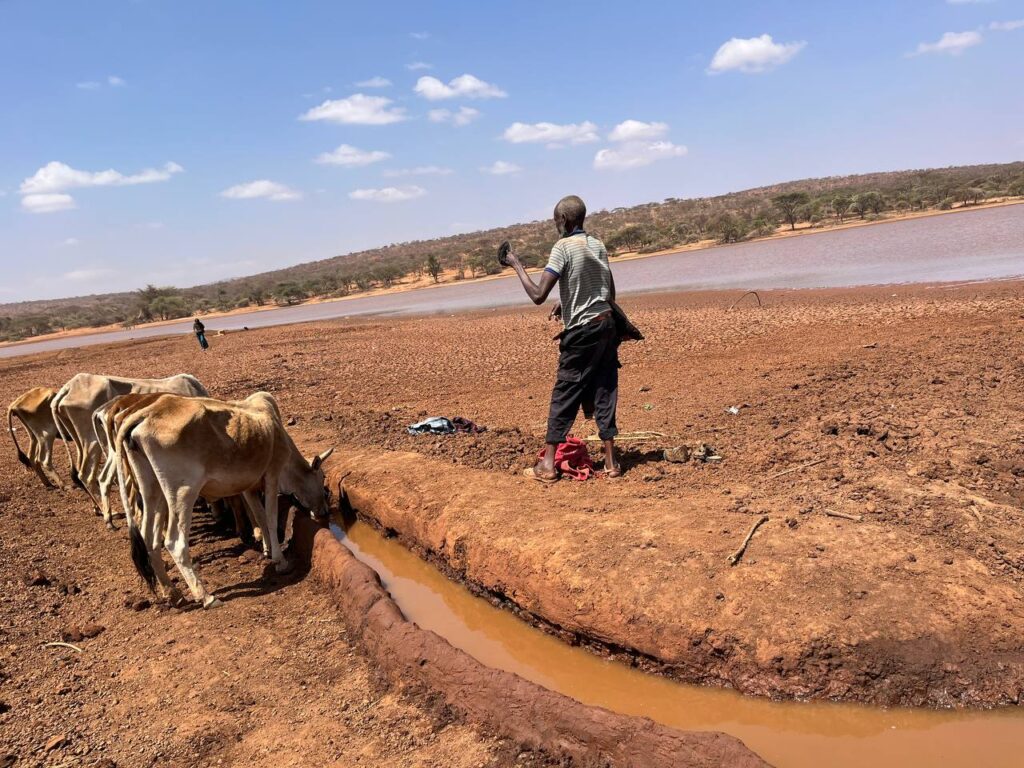
The immediate recovery response for semi-agrarian communities like Telltale is seed, fertilizers, plows, and other farming tools. On the other hand, pastoralist areas like Dilo and Moyalle need consistent food, water aid, animal veterinary services, cash transfers, and restocking for a period. Concerted efforts among the government, national and international NGOs, academic institutions, and Private sectors (Banks) need to synergize their efforts to lift the Borana people from the current upheaval. ‘In addition, a transition to climate resilient technologies, such as solar pumps for irrigation systems, and hydroponic animal feed mitigate against climate change would need to be utilized.
Additionally, a sustainable development strategy is needed to reinvigorate Borana’s economy back to being the powerhouse of Ethiopia’s livestock industry. With the war in Ukraine, earthquake in Turkey, and flood in Syria, NGOs face challenges in the stretching of resources. Resources such as volunteers and funding are directed to natural disasters that have received world attention. However, the crisis in Borana is as dire with the need to contain further suffering, with disease and starvation looming to direct their efforts here as well. Working cooperatively with neighboring countries and coming up with a containment plan for the outbreak of cholera and measles could help reduce the scale of spread and save more lives. All the aid that is being provided is needed by the people of Borana; however, specific issues should be prioritized, such as malnutrition, an artificial body of water, or water chemicals for purification. Climate change/Global warming needs to be accepted and perceived as a natural disaster.
After identifying all the agrarian societies in Borana, the government should put in place a policy on land use, land tenure, and cattle to maintain the overpopulated livestock. The natural endowment (water, grazing, and erosion) depletes because of the overpopulation of cattle. The collaboration of east African nations to fight climate-induced calamities will help prevent and resolve climate change disasters. Increasing the spread of awareness on climate change and educating agrarian and pastoralist communities will help build resilience in the future. Sustainable development strategies such as providing agrarians with “seeds” and speeding up the approval process for water source development are a few ways to speed up the recovery of Borana.
Ethiopia requires a stringent national strategy to overcome the recurrence of the drought in many parts of the country, which includes Borana, Afar, Somali, etc. It is beyond the responsibility of one sector or one ministry to tackle the severe damages caused by this extended drought. Ministries such as agriculture, irrigation, health, water, and energy need to create a joint strategy and implementation plan for sustainable development and end the suffering of its citizens.
Editor’s Note: Dawie Tola is a graduate of Virginia Tech University with BS in political science with a concentration in legal studies. She previously used to do scholar activism concentrating on the issue of homelessness and mass incarceration in the US. She can be reached at dawietola24@gmail.com


